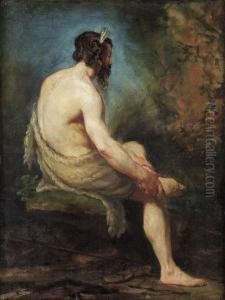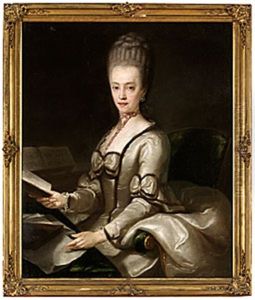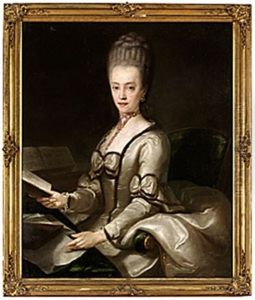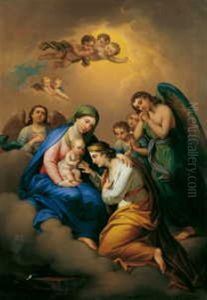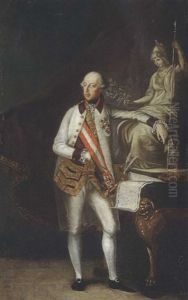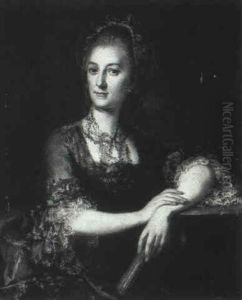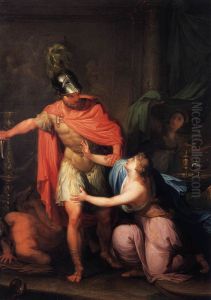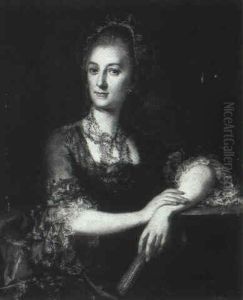Hubert Maurer Paintings
Hubert Maurer was an Austrian painter, primarily known for his portraits and historical paintings. He was born on January 11, 1738, in Vienna, Austria, during a period of great artistic activity in Europe, which was influenced by the Baroque and Rococo styles.
Maurer received his initial artistic training at the Academy of Fine Arts Vienna, where he was influenced by the teachings of Martin van Meytens, a Swedish-Austrian painter who was the director of the academy. Maurer's early work was characterized by the Rococo style, which was popular during his formative years.
In his early career, Maurer worked on various commissions, including religious and mythological scenes, but he gradually shifted his focus to portraiture. His portraits often displayed the elegance and attention to detail that were the hallmarks of the Rococo style. Maurer became a sought-after portraitist among the Austrian nobility and middle classes, capturing the likeness and character of his subjects with a refined brushwork.
In addition to portraiture, Maurer also engaged in creating historical paintings. These works reflected the Neoclassical style, which gained prominence towards the end of the 18th century. Neoclassicism was a reaction against the ornate Rococo style, favoring a return to the simplicity and grandeur of ancient art. Maurer's historical paintings were marked by their clear composition, subdued color palette, and the use of classical motifs.
Despite his success as a painter, there is limited documentation on Maurer's personal life and career, and he did not gain the same level of lasting fame as some of his contemporaries. Nevertheless, he contributed to the artistic landscape of his time, and his works can be seen as a bridge between the Rococo and Neoclassical styles.
Hubert Maurer passed away on December 11, 1818, in Vienna. Today, his work is preserved in various art collections and museums, offering insight into the artistic trends and societal mores of late 18th-century and early 19th-century Austria. Although not as widely recognized as some of his peers, Maurer remains an important figure within the Austrian art history context, and his paintings continue to be studied for their aesthetic and historical value.



